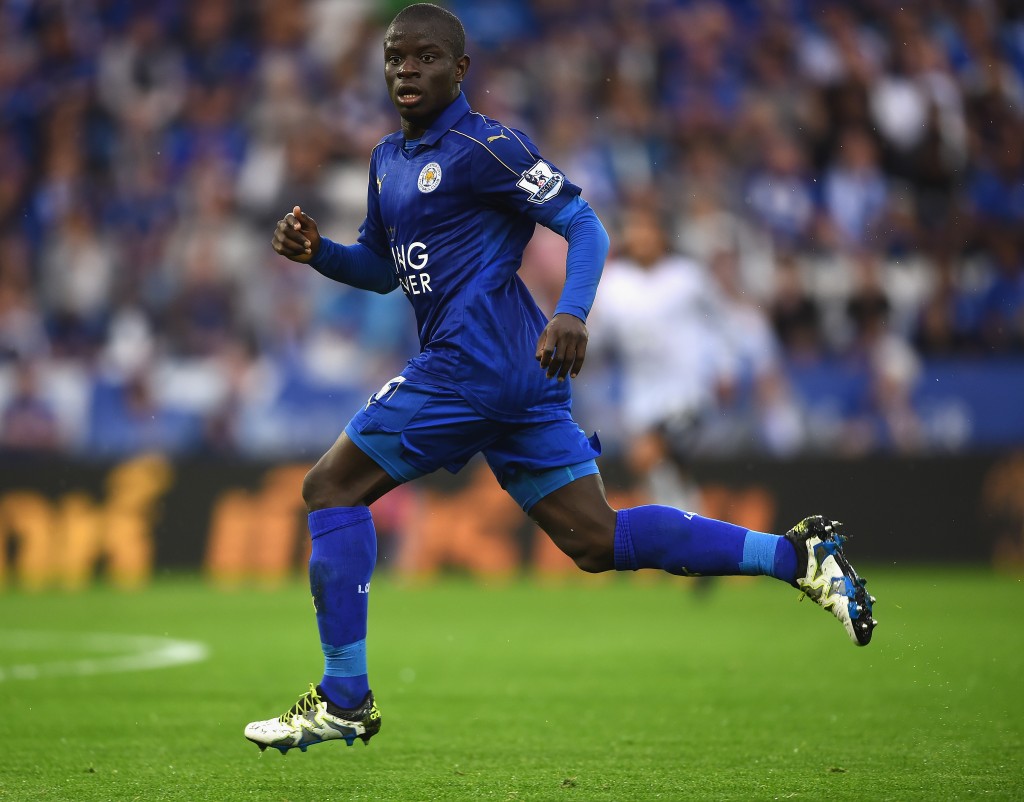In light of recent news linking N’Golo Kante with a big money move to Chelsea, The Hard Tackle takes a look at how he might fit into Antonio Conte’s system.
In the past few days, Leicester City star N’golo Kante’s transfer to Chelsea has looked more probable than ever, with the Blues reported to be in pole position to land the 25-year-old. Kante, along with Riyad Mahrez and Jamie Vardy was one of the stars of Leicester City’s title winning side that shocked the world. The Frenchman was a revelation in the middle of the park, as his tireless running and fantastic work ethic helped the Foxes storm past opposition in brilliant fashion and helped bring the happiest possible ending to what is arguably football’s greatest fairy tale. This phenomenal rise to being one of the top midfielders in the game has seen him attract attention from the likes of Liverpool, Manchester United, Real Madrid and Arsenal, and has made him one of the most sought-after players in all of Europe.
In his first press conference as Chelsea manager, on being questioned about the type of formation he’d use, Antonio Conte said that he tailors his formations around the abilities and talent of his players in order to get the best out of them. He said “In the past, I started my season with the other teams with one idea of football, and then I changed because I saw that these players, or the system of play for these players wasn’t good. Three at the back, four at the back… it’s not important.”
Having undertaken only one training session since being announced as Chelsea boss and given the unavailability of some players, it is unlikely he would have assessed the correct formation to use with the squad at his disposal.
Kante’s athleticism and his work ethic will allow Conte to deploy him in almost any manner in the middle of the park. The following are some of the most probable ways that Conte might use the Frenchman in his new-look Chelsea side during the upcoming season.
Formation : Conte’s favourite 3-5-2
Taking into account what he said about using 3 at the back, it is unlikely we may see this formation be used. But this formation has helped him achieve great things at Juventus and Italy and he will definitely see if the players could adapt to this formation well enough to use on a regular basis. If he were to decide that the 3-5-2 is the best way to go, this might be how Kante features in it.
In this kind of form, he’d surely be one of the first names on the team sheet and he’d likely start alongside Ruben Loftus-Cheek, Marco Van Ginkel or Nemanja Matic. They would provide adequate cover for the wing-backs and the deep plying playmaker, who in this case would be expected to be Cesc Fabregas. He would be tasked with winning back possession and starting off attacks.
Formation: The unconventional 3-4-3
This formation would be one heavily reliant on counter attacks and breaking down possession in the middle of the park. It is one that will require wing backs and wingers to shift from attack to defence and vice versa in a matter of seconds and for that, a strong midfield is crucial. Given that the primary origins of attacks will come from the flanks, the presence of an energetic central midfield who can break down attacks from the opposition in the middle of the park is absolutely necessary.
Kante could be paired in central midfield alongside Matic or Ruben Loftus-Cheek, with the 25-year-old focusing more on defence than attack. Not only will both of the midfielders be tasked with breaking down the opposition attack and nullifying the threat of the any opposition attacking midfielders, but they will also be responsible for setting attackers and away and providing able assistance and cover for their wingbacks and wingers.
Formation: Two up front, 4-1-3-2
This formation would see Conte use Kante ahead of the centre-backs. He would act as a shield for the defenders, especially for the central defenders. He would also shift into the pocket of space in between the centre-backs if either one of them is covering for a fullback.
This would also mean making the occasional run into the opposition half to try and contribute in attack, but his primary focus would be defending from the back. Breaking down attacks will be vital and quick distribution of the ball to unleash attacks will be necessary. This will involve a lot of pressing up the field and putting a lot of pressure on the opponents in order to try and recover the ball.
